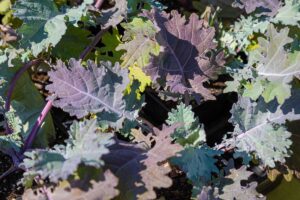Kohlrabi is a cole family plant with large, juicy bulbs that form above ground, emerging from a central stalk.
Gaining in popularity, these crispy bulbs are easy to grow, and are delicious both raw and cooked.
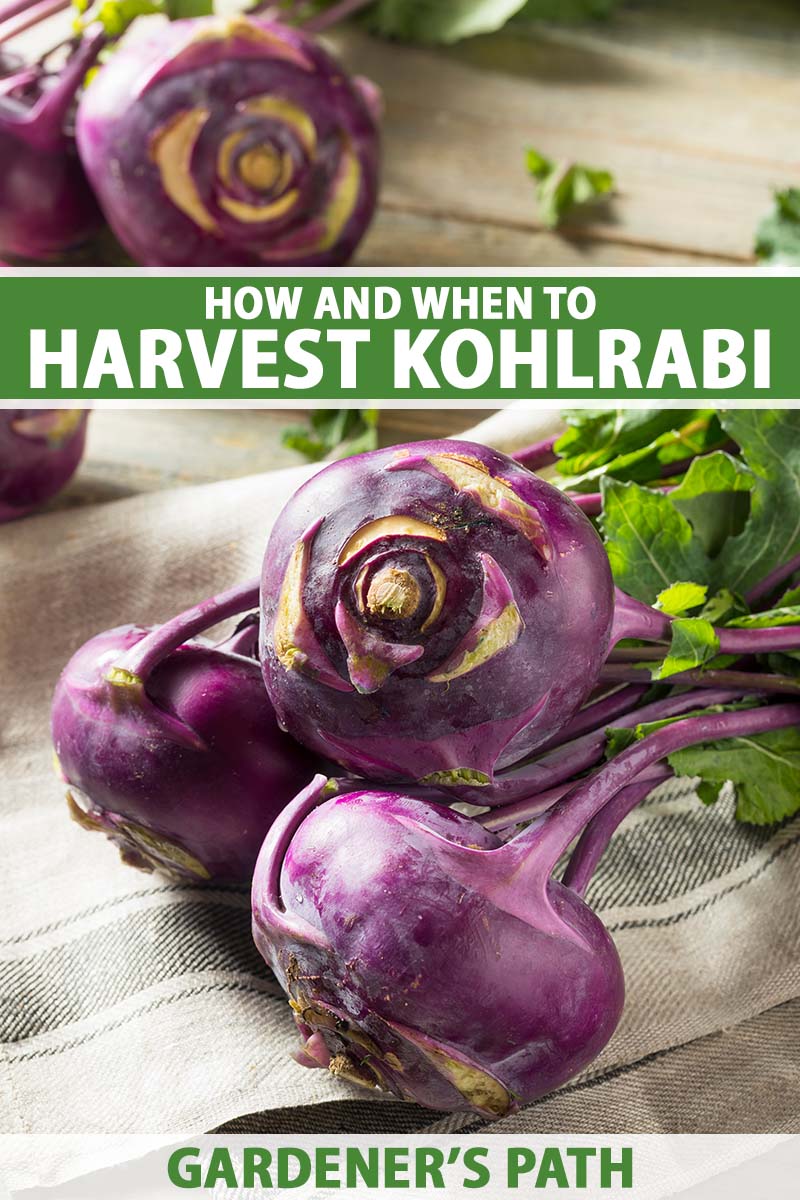
We link to vendors to help you find relevant products. If you buy from one of our links, we may earn a commission.
How do you know when they are ready to pick? Read on to learn how to harvest, store, and prepare homegrown kohlrabi.
What You’ll Learn
When kohlrabi first emerges in the garden, it looks much like a young kale plant. As plants mature, the bright purple or green stems swell into round fleshy bulbs of the same color, with leaves growing outward on all sides.
As you are waiting for these bulbs to grow large enough for harvest, you can pick and eat the young leaves.
Foliage can be harvested starting around six weeks after planting. Just be sure to leave some leaves on each plant to provide energy needed for the bulbs to form.
You can learn more about harvesting and eating the leaves here.
When to Harvest Bulbs
Kohlrabi doesn’t change color when it’s ripe, nor is there a noticeable difference in texture.
Therefore, harvest timing is based entirely on the size of the swollen stems. The number of days to maturity on your seed packet can help to provide a rough estimate.
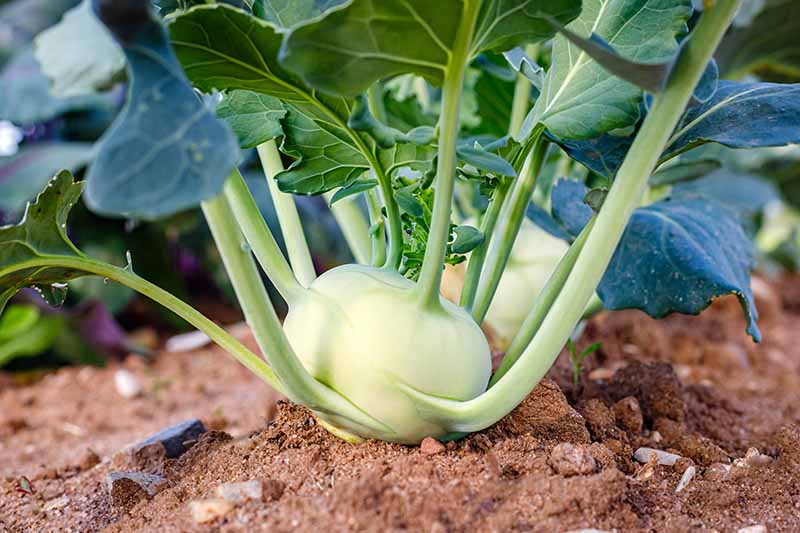
These bulbs should be ready to harvest once they have reached one to three inches in diameter, about 60 days or so from planting, depending on the variety.
Try to pick them during this time frame when they are still young and small.
Though giant bulbs may look enticing, except in rare cases with specific jumbo cultivars, they tend to become woody and tough when left in the garden too long.
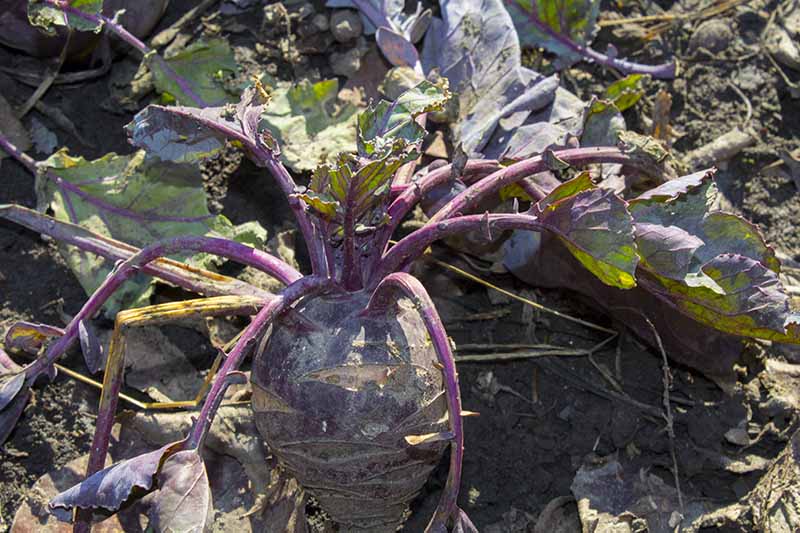
This fast-growing plant is very conducive to succession planting. Sow seeds every few weeks throughout the season for a continuous harvest.
How to Harvest
Harvesting the bulbs is easy! Simply use your hands to pull up the whole plant, roots and all. Shake off the soil and then use garden shears to cut off and dispose of the narrower stem and roots below the bulb.
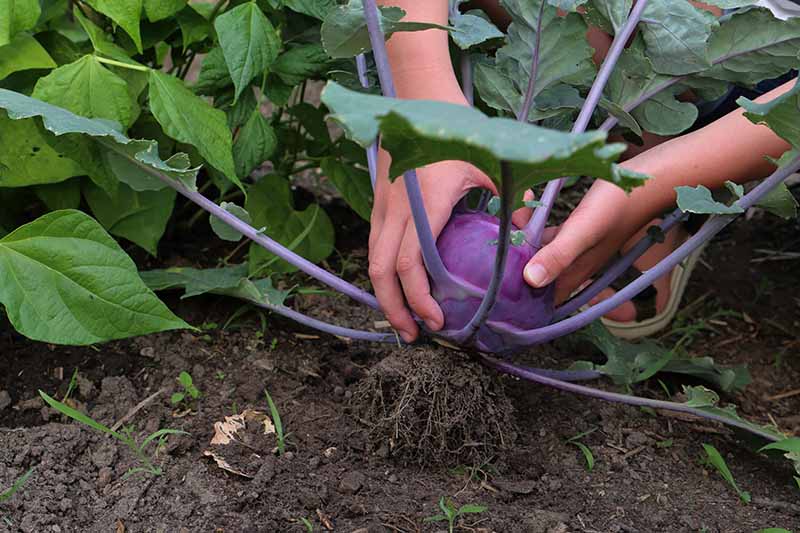
An alternative method is to use a clean, sharp knife to cut the stem just below where it starts to swell, leaving the base of the plant in the ground.
Each plant only produces one bulb, so the only reason to use this method is if you wish to save the seeds for planting.
Kohlrabi is a biennial, meaning a plant left in the ground will flower and set seed during the second year of growth.

With either method, pull off the leaves from the bulb and set them aside for use in stir fries or salad. The leaves are delicious, with a similar flavor and texture to collard greens.
Storage Tips
To use what you’ve picked right away, peel the outside of the bulb, as the skin tends to be quite tough.
Otherwise, wait to wash your harvest and keep the peels on for longer storage.
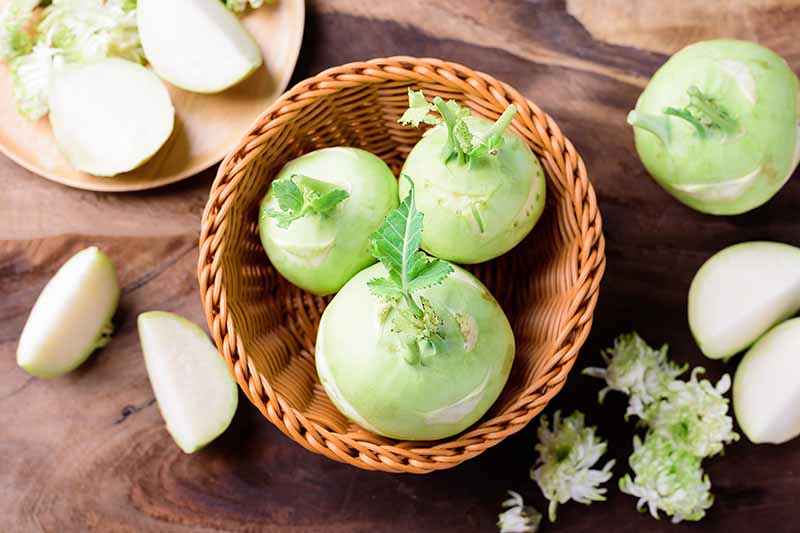
Unpeeled bulbs will stay fresh for several weeks in the fridge, especially if they are wrapped in a moist towel and placed in a sealed perforated plastic bag in the crisper drawer.
If you do wish to store cut pieces, be sure to wrap them in plastic or store them in an airtight container to prevent them from drying out. Use cut pieces within a couple of days.
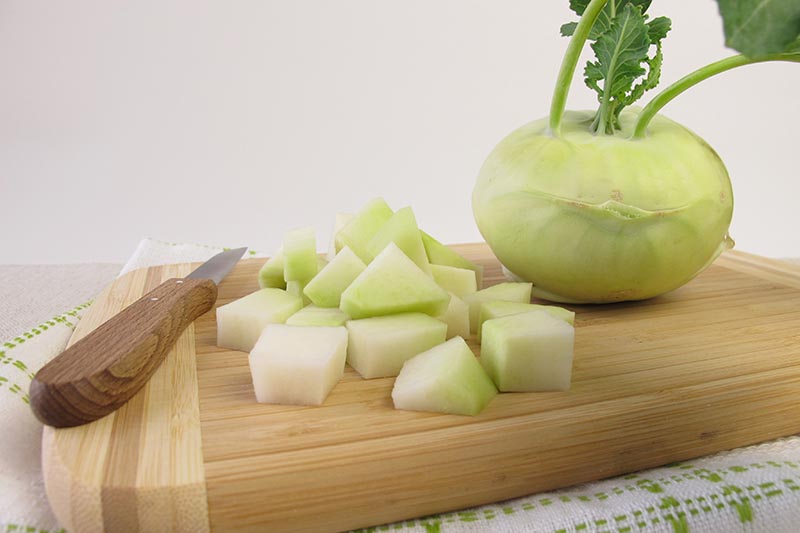
You can also freeze the bulbs for long-term storage. Peel and cut the bulb into chunks and blanch the pieces for a couple of minutes in boiling water.
Transfer the pieces to an ice water bath to stop the cooking process, drain, and allow them to dry before portioning into freezer-safe bags or containers.
When stored properly, the blanched vegetables will keep in the freezer for about eight months.
Cooking Ideas
One of the great things about this veggie is that it is quite tasty both raw and cooked!
When eaten raw, it tastes a bit like a combination of broccoli and cabbage. The flavor is crisp and just a little bit spicy.
You can shred or spiralize kohlrabi and add it to a sandwich or salad, or cut it into slices and serve it with a veggie dip.

Cooking brings out the sweetness in this vegetable. It can be cooked similarly to a potato or turnip, and it can be roasted, steamed, or even mashed.
Kohlrabi pairs well with root vegetables. For advice on preparing the perfect root veggie roast, check out this guide on our sister site, Foodal.
Pick up tips on the best ways to cut veggies for roasting, how to determine appropriate cooking times, and suggestions for yummy additions.
I especially love to roast my harvest along with colorful crops like sweet potatoes, carrots, and beets, and toss everything with a tablespoon or two of balsamic vinegar and a dash of maple syrup prior to cooking.
Or, you can get creative with this delicious vegan cream of kohlrabi soup recipe, also available on Foodal.
This sweet and hearty soup is made with caramelized onions and coconut milk, and garnished with fresh parsley. It’s perfect for enjoying on those crisp fall evenings!
That’s One Cool Crop
With its delightfully crisp and juicy bulbs, attractive edible foliage, and beautiful color, this is a vegetable that is just plain cool! Not to mention, it is a cinch to harvest, store, and prepare.
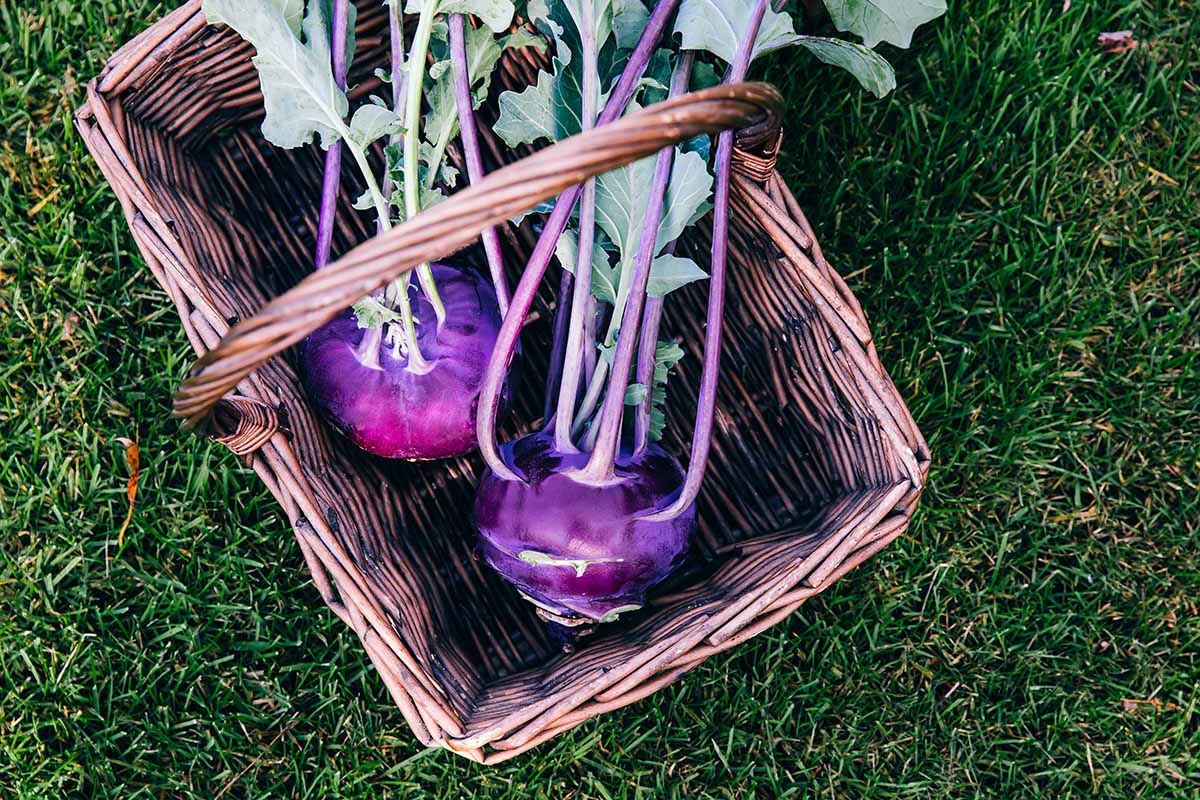
Do you have a favorite use for kohlrabi? Share your tips in the comments section below!
Want to learn more about growing kohlrabi in your garden? Don’t miss these other great guides:


